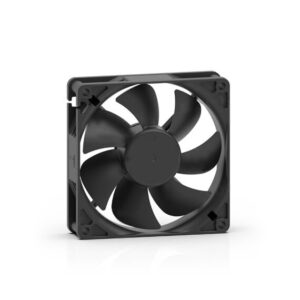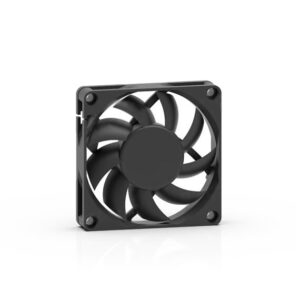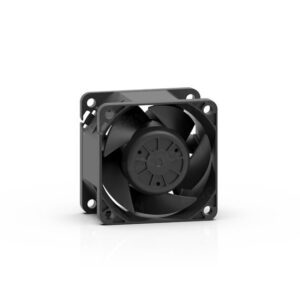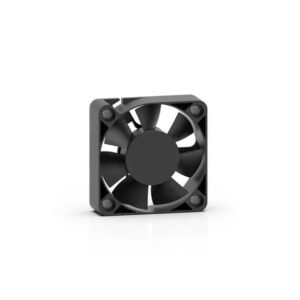High Airflow DC Axial Fan, Ball Bearing 254x89mm
This 10-inch DC axial fan (254x89mm) features long-life ball bearings for a 70,000-hour service life. It delivers powerful airflow up to 1321 CFM with a robust aluminum frame. Operating in a wide temperature range of -30 to 70°C, it’s perfect for demanding cooling applications.
Using Superior Air Movement: An In-depth Look at the High-Performance 254x89mm DC Axial Fan .
In the world of thermal management, where reliable heat dissipation is extremely important for the durability and integrity of electronic parts and systems, the demand for high-performance cooling solutions is ever-present.
Addressing this essential demand is an awesome 254x89mm DC axial fan, crafted to provide significant air movement for the most demanding applications. this DC axial fan is not just a part yet a foundation of system stability, supplying a durable mix of power, longevity, and intelligent design. From its foundational materials to its sophisticated operational features, every facet is diligently crafted to ensure optimum efficiency in diverse and tough atmospheres.
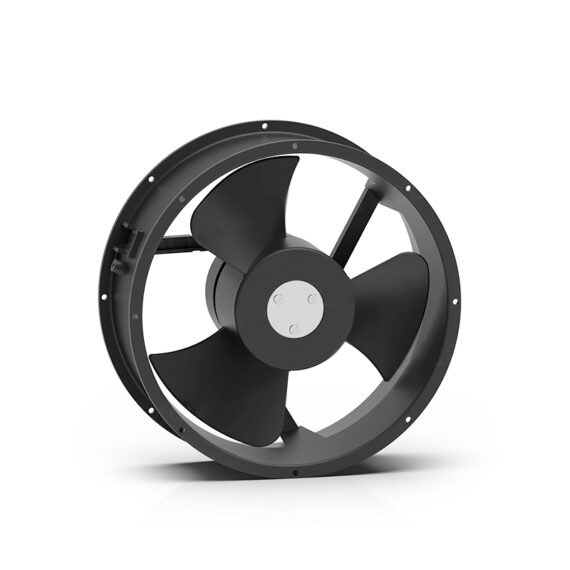
Built for Endurance and Integrity: Building And Construction and Products .
At the core of this DC axial fan’s strength is its thoughtfully selected construction products. The DC axial fan structure is produced from Aluminum ADC-12, a die-casting alloy renowned for its favorable balance of residential or commercial properties. ADC-12 is commemorated for its superb castability, enabling the development of complex and accurate shapes, which is important for maximizing aerodynamic efficiency.
This material likewise gives a good strength-to-weight proportion, ensuring structural honesty without including unnecessary mass. Moreover, its resistance to heat-induced cracking and excellent rust resistance add dramatically to the DC axial fan’s long-lasting toughness, making it a dependable selection for continual procedure.
Complementing the tough framework are the DC axial fan impellers, which are injection-molded from Thermoplastic PBT (Polybutylene Terephthalate) with a UL 94V-0 flammability score. This material is a high-performance engineering thermoplastic recognized for its extraordinary mechanical and chemical residential or commercial properties. PBT offers high toughness, durability, and resistance to tiredness, making certain the blades can stand up to the anxieties of high rotational speeds without contortion.
Its low rubbing coefficient and self-lubricating attributes contribute to quieter procedure and reduced wear in time. The UL 94V-0 score is an important safety and security function, signifying that the product is self-extinguishing and will certainly not propagate a flame, an important consideration for electronic rooms and other applications where fire safety is a top priority.
The heart of any type of DC axial fan hinges on its bearing system, and this version includes a high-grade sphere bearing system. Sphere bearings provide substantial advantages over traditional sleeve bearings, particularly in high-speed and requiring applications. They run with lower friction, which equates to boosted efficiency, lowered warmth generation, and a substantially longer functional life-span.
The use of ball bearings additionally allows the DC axial fan to be mounted in any positioning without impacting performance or long life, a flexibility not always paid for by sleeve bearing styles. This boosted sturdiness is shown in an impressive service life of 70,000 hours at a constant operating temperature of 40 ° C, a testimony to the DC axial fan’s durable engineering.
Unboxing the Efficiency: Air Flow and Static Stress .
The main function of any type of DC axial fan is to relocate air, and this DC axial fan excels in this respect, efficient in creating considerable air movement. Axial fans, by their layout, are proficient at moving huge volumes of air in an instructions parallel to the DC axial fan’s axis, making them extremely effective for general cooling and ventilation purposes. This high air movement capability is vital for applications calling for quick warm exchange to preserve optimum operating temperature levels for sensitive components.
An essential tool for comprehending a fan’s capabilities is its air performance contour, which graphically stands for the partnership in between air movement and static pressure. Fixed pressure is the resistance the fan encounters when pushing air through a system, such as with warmth sinks, filters, or thick digital elements. The offered air efficiency chart illustrates the inverted connection between these 2 essential criteria: as the resistance (static stress) in a system raises, the quantity of air the fan can move (airflow) lowers. The graph showcases performance at 3 unique rates– 2000, 2500, and 3000 RPM– enabling engineers and system designers to choose the optimal operating factor for their certain application.
For example, at 3000 RPM, the fan can deliver an optimum air flow of 864 CFM (Cubic Feet per Minute) in a free-air atmosphere without fixed pressure. As the fixed pressure boosts, the air flow progressively lowers along the contour. This in-depth performance data is crucial for precisely predicting cooling performance within a provided system and ensuring that the picked fan can overcome the system’s resistance to supply the essential air movement.
The DC axial fan’s capability to run across a range of rates supplies important versatility. Lower speeds lead to reduced airflow and noise, suitable for durations of reduced thermal load, while higher rates provide maximum cooling power when called for. This versatility is an essential benefit of modern-day DC axial fans.
Knowledge and Control: Advanced Features for Modern Systems .
Past its outstanding mechanical building and raw efficiency, this DC axial fan is geared up with a collection of advanced features that improve its functionality, reliability, and integration right into innovative electronic systems.
Motor Security: . To guard versus a selection of mistake conditions, the fan incorporates a number of electric motor defense attributes. These securities are vital for stopping damages to the fan and the system it is cooling.
- RP (Reverse Polarity): This function protects the fan’s electronics from damage if the power supply is accidentally attached in reverse.
- SS (Soft Beginning): A soft-start feature gradually boosts the fan’s speed upon power-up, decreasing the first inrush current and mechanical stress and anxiety on the motor and bearings.
- AS (Automobile Start): The auto-start or locked blades defense feature spots if the fan blades are blocked and stopped from revolving. In such an occasion, it will certainly reduce power to the motor to stop getting too hot and possible burnout. It will certainly after that periodically attempt to reactivate up until the obstruction is gotten rid of.
- CL (Present Limitation): This function limits the maximum existing attracted by the motor, securing it from overcurrent circumstances.
- OVP (Over Voltage Defense): This function secures the fan from damages in the event of a voltage rise from the power supply.
Signal Results: . For tracking and system assimilation, the fan gives numerous signal output options that interact its functional standing.
- FG (Frequency Generator): The FG signal offers a pulse result with a regularity straight proportional to the fan’s rotational speed. This allows a connected controller to precisely keep an eye on the follower’s RPM and find any type of deviations from the expected rate.
- RD (Turning Detection): The RD signal is an easy go/no-go signal that shows whether the fan is rotating or has actually quit. A constant signal normally suggests a mistake problem, permitting the system to set off an alarm system or take restorative action.
- RDB (Turning Discovery with Low Alarm): This is a variant of the RD signal where the alarm state is a low voltage degree.
- LD (Reduced Discovery): This signal outputs an alarm if the fan’s rate goes down listed below an established threshold, supplying a very early warning of prospective issues.
Speed Control Modes: . The capability to dynamically manage the fan’s rate is a crucial function for enhancing cooling performance, energy consumption, and acoustics. This foan supplies an extensive series of rate control modes.
- PWM (Pulse Width Modulation): PWM is a digital control technique that enables accurate and reliable rate guideline. By differing the duty cycle of a square wave signal, the fan’s rate can be adjusted throughout a vast array. This method is very effective and allows for the control of numerous followers from a solitary signal.
- TC (Temperature Control): In this mode, an incorporated thermistor monitors the ambient temperature level and immediately readjusts the fan’s rate accordingly. As the temperature level increases, the fan speed enhances to offer even more cooling, and as it falls, the rate reduces to lower noise and power usage.
- VC (Voltage Control): This analog control approach enables the follower speed to be differed by adjusting the DC voltage supplied to a control input. The fan rate is commonly proportional to the control voltage.
- CC (Consistent Present): This mode maintains a continuous existing to the electric motor, which can be helpful in specific applications for regular torque.
- CS (Custom-made Rate): This alternative permits the follower’s speed characteristics to be personalized to meet details application needs.
A Functional Service for High-Demand Cooling .
To conclude, this high-airflow 254x89mm DC axial fan represents a thorough and robust option for requiring thermal administration difficulties. Its sturdy building, including a Light weight aluminum ADC-12 framework and polycarbonate PBT impeller, ensures a long and trusted operational life. Using a premium ball bearing system additional improves its durability and enables functional installing alternatives. The fan’s remarkable airflow capabilities, detailed in its multi-speed efficiency curve, provide the essential cooling power for a broad range of applications, from commercial control closets and telecommunications devices to high-performance computer systems and clinical tools.
What absolutely establishes this fan apart is its array of smart functions. The detailed suite of electric motor defenses safeguards against usual electrical and mechanical faults, while the different signal outputs give critical feedback for system surveillance and control. Additionally, the functional speed control options, including sophisticated PWM and temperature level control, permit the optimization of cooling down performance, power performance, and acoustic noise.
This mix of robust layout, powerful performance, and intelligent control makes this DC axial fan an indispensable element for any system where dependable and effective cooling is not simply a function, however a requirement.

